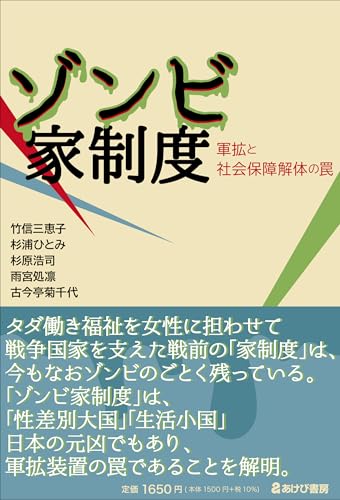5 Fatal Flaws of Abe’s Remilitarization Drive
-----
Reason 1: It is unconstitutional
Reason 2: It was done undemocratically
Reason 3: It’s been accompanied by the suppression of academic and press freedoms
Reason 4: It’s been accompanied by a set of other remilitarization measures
Reason 5: It hasn’t made Japan any safer
-----
Previous video: "5 REASONS WHY A STATE FUNERAL FOR ABE IS A BAD IDEA"
********************Video script********************
Hi everyone. As I explained in my previous video, I think it’s a bad idea to have a state funeral for the former prime minister Abe, and a key reason for that was because the occasion is being utilized to whitewash his highly problematic political legacy. So, we are going have a couple of more videos that critically assess his legacy for what it is. Today I am going to talk about his remilitarization agenda, and in particular, the lifting of the ban on collective self-defense, and give my reasons why there are serious problems with it.
OK, so first things first –what is collective self-defense and what did Abe do exactly? You probably all know the famous Article 9, also known as the “peace clause.” It goes like this.
---------------
Article 9.
Aspiring sincerely to an international peace based on justice and order, the Japanese people forever renounce war as a sovereign right of the nation and the threat or use of force as means of settling international disputes.
In order to accomplish the aim of the preceding paragraph, land, sea, and air forces, as well as other war potential, will never be maintained. The right of belligerency of the state will not be recognized.
---------------
In spite of this, Japan has had what is today’s Self Defense Force at the US prodding since the Korean War broke out in 1950, and since a cabinet decision in 1972, successive Japanese governments upheld the official view that Japan can exercise its right of individual self-defense, but not of collective self-defense—that it can minimally defend itself if attacked and if no diplomatic solutions can be found, but that it cannot take part in other countries’ wars –which is what collective self-defense is about. The government position has been that the state can defend itself, in spite of Article 9, in order for it to be able to guarantee the “right to live in peace” which is mentioned in the Preamble of the constitution and “the right to life, liberty, and the pursuit of happiness” of the Japanese people, which is also guaranteed in Article 13, but all of this should be within the constraints set by Article 9. As a result, the 1972 cabinet decision specifically noted that the right of collective self-defense is banned by the constitution.
Overtime, this position –that Japan can exercise its right of individual self-defense to minimally defend itself when attacked, but not its right of collective self-defense to get engaged in other countries’ wars—has come to be widely accepted in the Japanese society. In July 2014, however, Abe lifted the ban on collective self-defense by passing a cabinet decision that provided a new interpretation of the same constitutional texts and by following that up with a set of security legislation that legalized the new interpretation in summer 2015.
Abe’s 2014 cabinet decision superficially retained the same constitutional reasoning, but claimed that such “complex and significant national security challenges” as “the shift in the global power balance, rapid progress of technological innovation, development and proliferation of weapons of mass destruction and ballistic missiles, and threats such as international terrorism” meant that “when an armed attack against a foreign country that is in a close relationship with Japan occurs and as a result threatens Japan’s survival and poses a clear danger to fundamentally overturn people’s right to life, liberty and pursuit of happiness” Japan can exercise its right of collective self-defense.
Hmm, is it just me, or is it incomprehensible? So, things became complicated, and now if a close country, let’s say the US, is attacked, then Japan’s own survival is threatened even though it’s not attacked and the Japanese people’s right to life, liberty, and pursuit of happiness is fundamentally overturned even though Japan is not attacked, then Japan can join America’s war? I really don’t get this, and I am not the only one, as it turned out.
OK, so, here are the top five reasons why I think Abe’s lifting of the ban on collective self-defense and his wider remilitarization agenda despite Japan’s unamended peace constitution are highly problematic and should never be legitimized.
Reason 1: It is unconstitutional
Changing the interpretation of the same constitutional text is by no means always illegitimate, but there are limits and boundaries. If Article 9 permits the exercise of collective self-defense, it’s as if it doesn’t exist, and this is entirely different from arguing that minimal individual self-defense may be permissible under Article 9. The constitution is there to prevent the arbitrary use of power by the government, and for the government of the day to willfully abuse its power and negate the fundamental principle of constitutionalism pretty much takes us back to the prewar era of authoritarian rule. Initially, Abe sought to lower the constitutional hurdle to amend the constitution for a formal revision, but facing stiff public opposition, he chose to do it through the backdoor.
Having changed the government interpretation of Article 9 without formally amending it, he proceeded to enact a set of security legislation to reflect the change. But when all three constitutional scholars who were summoned as witnesses in a parliamentary panel, including the one who was nominated by the ruling parties, declared the security bills to be unconstitutional, massive protests ensued for months against what was contested as an unconstitutional move by an authoritarian government. According to an NHK poll conducted with constitution law scholars nationwide at that time, 377 out of the 422 respondents, which is about 90%, considered the security legislation to be unconstitutional.
Reason 2: It was done undemocratically
The whole point about constitutionalism is that even a democratically elected government must govern within the boundaries set by the constitution, in respect of the separation and limitations of state powers and the basic rights and freedoms of the sovereign people. So, there is no excuse to act tyrannically even if you won elections. The problem in Abe’s case, though, was that even his democratic credentials were dubious. The tyranny of the majority cannot be said to be a legitimate form of democracy, and his case, it would be more accurate to say that it was the tyranny of the minority. Check this out.

This graph shows the electoral results of Abe’s ruling LDP in the Lower House elections. From the left you have 2009, this is before Abe took over as the leader of the party, and this is when the LDP got defeated and lost power. The next three elections in 2012, 2014, and 2017, were three consecutive victories by the LDP that Abe led, which allowed him to be in power for nearly eight years in a row until 2020.
The red line indicates the LDP’s share of the seats in the Lower House. When it lost power in 2009, it didn’t have even a quarter of the seats. Then, in 2012, Abe brought them back to power in a landslide victory that earned them over 60% of the seats, and basically that remained little changed in the next two elections as well. It looks like he was wildly popular this way, right? But, see the other two lines.
The black line is the voter turnout, which was close to 70% in 2009. When Abe won back power for the LDP in 2012, it went down by more than 10% to less than 60%. In 2014, the turnout dropped further to close to 50%, and this is in fact the lowest turnout in history. In 2017, it went up by 1%, but it was still the second lowest turnout ever.
Now, please look at the blue line, which remains more or less flat over time. This is the LDP’s share of the votes in the single-member districts in percentage out of all voters, including those who abstained. It’s consistently around 25%, meaning that, out of all voters including those who abstained, only about one in four voters go to the polling booth and vote for an LDP candidate. What is astonishing is the fact that the LDP votes were highest in 2009 when it got soundly defeated by its rival and lost power, and in 2012, the red line shot up in a landslide victory for Abe even though the blue line actually goes down slightly. The blue line crept up little by little in 2014 and 2017, but the LDP’s share of the votes remained consistently lower than in 2009. In other words, Abe did not return nor stayed in power due to increased popular demand and support, but because the turnout got depressed and his rival parties remained weak and divided, so he could win even though his party never got more votes than when it was soundly defeated in 2009. You can see that the magic of the first-past-the-post system, translating a minority of the votes into a crushing majority of the seats.
Does it appear to you that Abe had a special democratic mandate to ignore the constitution and push through an unconstitutional piece of legislation? It doesn’t to me. Moreover, Abe made a mockery of parliamentary accountability, for instance, by refusing to convene the parliament in blatant breach of the constitution. Abe’s remilitarization agenda was pushed ahead at the expense of considerable democratic backsliding.
Reason 3: It’s been accompanied by the suppression of academic and press freedoms
Speaking of democratic backsliding, the muzzling of the media and the government interference with academic freedom inevitably accompanied Abe’s unconstitutional and undemocratic moves because he needed to silence his critics and marginalize dissent. Japan’s ranking in the Reporters Without Borders World Press Freedom Index dropped from 22nd to 66th during Abe’s premiership and that’s pretty much the low level that Japan is stuck today. Team Abe notoriously exerted pressure to get rid of some media figures who openly criticized his policies on the airwaves. They also purged academics who joined the protest against the security legislation from the government councils, and his successor, the former prime minister Yoshihide Suga, blacklisted and refused to appoint academics, who they thought were critical of the government, to the Science Council of Japan, Japan’s national academy, in clear breach of the law.
Reason 4: It’s been accompanied by a set of other remilitarization measures
The interference in the appointment process of the members of the Science Council of Japan is stemming from Abe’s desire to mobilize Japanese universities and scientists to engage in military-related research and to create a military-industrial complex in Japan –now that Article 9 has been successfully undermined, in their view. The unconstitutional security legislation was preceded by the enactment of the notorious state secrets law and followed by the equally infamous conspiracy law, which potentially give the government unchecked power to hide information and spy on the people at the same time. Even after he stepped down as prime minister, Abe continued to act as the power behind the throne and pushed his successors to have Japan acquire enemy strike capabilities, double defense spending, and even negotiate a nuclear sharing arrangement with the US, and as the final cherry on top of the cake to formally amend the Article 9 of the constitution, so that his intransigent opponents of remilitarization shall be silenced and buried once and for all.
Reason 5: It hasn’t made Japan any safer
Finally, Abe had done all that claiming to the domestic public that Japan would be safer than ever as a result, but that is not what he said to his US masters. In his Congressional address entitled “Toward an Alliance of Hope” in April 2015, Abe vowed that…
“Toward an Alliance of Hope”
Address to a Joint Meeting of the U.S. Congress by Prime Minister Shinzo Abe
April 29, 2015
https://japan.kantei.go.jp/97_abe/statement/201504/uscongress.html
“We must make the vast seas stretching from the Pacific to the Indian Oceans seas of peace and freedom, where all follow the rule of law. For that very reason we must fortify the U.S.-Japan alliance... In Japan we are working hard to enhance the legislative foundations for our security. Once in place, Japan will be much more able to provide a seamless response for all levels of crisis. These enhanced legislative foundations should make the cooperation between the U.S. military and Japan’s Self Defense Forces even stronger, and the alliance still more solid, providing credible deterrence for the peace in the region.”
In short, Japan became a better sidekick of the US by the lifting of the ban on collective self-defense as it is now able to fight the wars that America fights without itself being attacked. Previously, thanks to Article 9, Japan was able to say no to US pressure to take direct part in the Korean War, the Vietnam War, and the Iraq War and so on, but Abe changed all that. You have to be extraordinarily optimistic to think that Japan is now safer for being able to fight the wars that the US chooses to –out of its own interest. Or to think that China can be brought to submission through a show of greater force. Well, at least you probably don’t live here in Japan, or you are mentally residing in Washington. Whatever.
Again, the irony of it all is that Abe lifted the ban on collective self-defense and perhaps irretrievably pushed Japan down the path of remilitarization with the US blessing, in the name of defending democracy, human rights, and the rule of law, when in truth, he himself made Japan less democratic, less liberal, and arguably less safe, when doing so. So, please don’t glorify Abe as a “champion of democracy” at the state funeral, unless you are also prepared to celebrate Donald Trump as one.
Thanks for watching.
*******************************************
September 9, 2022
Koichi NAKANO, "Progressive! Channel" (https://www.youtube.com/c/ProgressiveChannelKN/featured)
Next video: "5 DEADLY SINS OF ABE'S HISTORICAL REVISIONISM"
Reproduced by courtesy of Koichi Nakano Ph.D.
 慰安婦
慰安婦 貧困・福祉
貧困・福祉 DV・性暴力・ハラスメント
DV・性暴力・ハラスメント 非婚・結婚・離婚
非婚・結婚・離婚 セクシュアリティ
セクシュアリティ くらし・生活
くらし・生活 身体・健康
身体・健康 リプロ・ヘルス
リプロ・ヘルス 脱原発
脱原発 女性政策
女性政策 憲法・平和
憲法・平和 高齢社会
高齢社会 子育て・教育
子育て・教育 性表現
性表現 LGBT
LGBT 最終講義
最終講義 博士論文
博士論文 研究助成・公募
研究助成・公募 アート情報
アート情報 女性運動・グループ
女性運動・グループ フェミニストカウンセリング
フェミニストカウンセリング 弁護士
弁護士 女性センター
女性センター セレクトニュース
セレクトニュース マスコミが騒がないニュース
マスコミが騒がないニュース 女の本屋
女の本屋 ブックトーク
ブックトーク シネマラウンジ
シネマラウンジ ミニコミ図書館
ミニコミ図書館 エッセイ
エッセイ WAN基金
WAN基金 お助け情報
お助け情報 WANマーケット
WANマーケット 女と政治をつなぐ
女と政治をつなぐ Worldwide WAN
Worldwide WAN わいわいWAN
わいわいWAN 女性学講座
女性学講座 上野研究室
上野研究室 原発ゼロの道
原発ゼロの道 動画
動画


![[広告]広告募集中](https://wan.or.jp/assets/front/img/side_ads-call.png)












